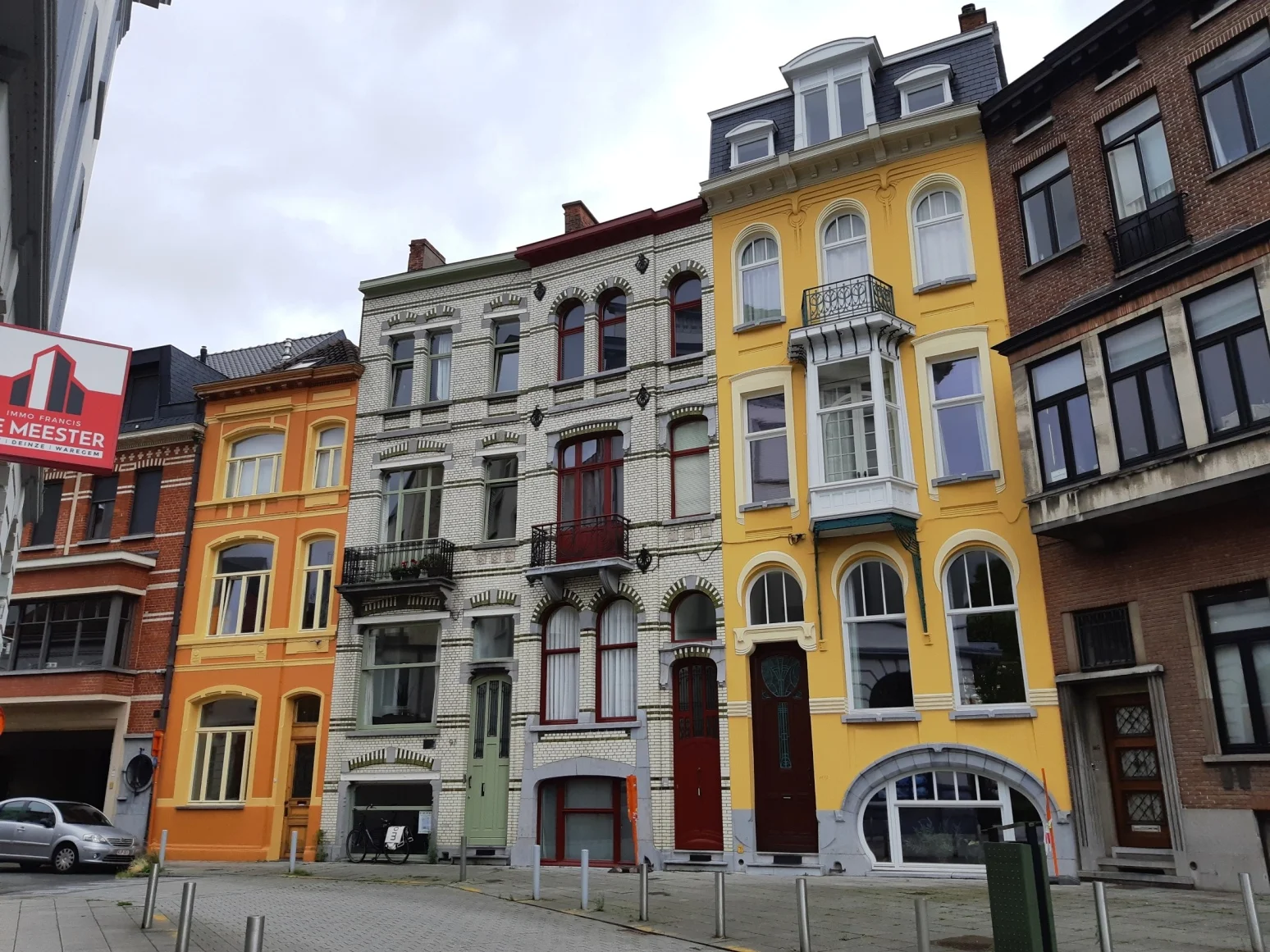After a fabulous stay in London, we headed to St Pancras Station to catch the Eurostar train to Brussels. This was a very efficient and fast service that took us into Brussels Midi Station. From the Midi, we had a short walk to find a local Belgian train to go to Ghent, our next destination.
Thirty train-minutes and a short taxi ride later, found us right in the centre of Ghent’s old city at our Air BnB. It was a nice modern, clean apartment on the third floor of an historic building, in a tiny lane off a main street. It was a great location and we were able to walk everywhere.
The Ghent weather was definitely drier and warmer than in the UK and Ireland where we had just spent the last few months. It finally felt like summer!
Before long, we were out exploring.
Ghent dates back as far as the Stone Age. By the end of the Middle Ages, Ghent was one of the largest and richest cities of northern Europe, with as many as 50,000 people living there in the year 1300.
Now days, the city centre is full of trams, walkways, and squares surrounded by elegant buildings, and its population has swelled to over 260,000.
We walked for ages having a good look around. The squares seemed perpetually full of people, drinking, eating and watching others.
 |
| Ghent's Belfry and City Hall (UNESCO) |
The belfry/bell tower, a UNESCO World Heritage site, is beautiful and stood out above the city skyline. We could even catch a glimpse of it from our apartment window.
Beside it are the Cloth Hall and very ornate City Hall; both UNESCO sites. We just loved the architecture.
We had a fantastic meal of moules and frites (mussels and fries) at a restaurant in the Vrijdagmarkt square one day, and enjoyed watching the sights from there before exploring further.
We had a fantastic meal of moules and frites (mussels and fries) at a restaurant in the Vrijdagmarkt square one day, and enjoyed watching the sights from there before exploring further.
The city has a network of attractive canals.
We stopped to view the impressive St Bavo’s cathedral, the oldest parish church in Ghent, as well as a whole lot of other incredible looking churches.
We loved Ghent. There is so much to see in the historic centre that it is almost overwhelming. You could wander around for days and still see more amazing buildings.
There are two castles in the city. One is the Castle of Gerald the Devil, a rather austere looking building that was built in the 13th century.
The other is
Later we went to see the very interesting Beguinage of Our Lady of Ter Hoyen founded in 1235. It is one of two beguinages in Ghent listed as UNESCO World Heritage sites.
A beguinage is a housing complex built to accommodate beguines. These are religious women who lived together as part of an independent community, instead of under the guardianship of a man, or within the vows of a church. The whole complex is surrounded by a wall so it’s like a village within a city.
The last beguine that lived in the Ghent beguinage passed away in 2005. Today the buildings are leased as homes or artists’ studios, and are slowly being restored.
The beguinage is a wonderful concept that worked successfully for almost 900 years.
A few days later, we took a tram to the railway station, then caught a train to Bruges for the day.
Bruges is ancient, very pretty, and also has gorgeous architecture. Its historic centre is deemed the best-preserved example of medieval Flanders and is a UNESCO World Heritage Site.
We had a lovely day walking around its compact historic centre, exploring and enjoying the many small cobbled streets and lanes that twist through it in all directions.
We saw more amazing architecture, and the 13th century belfry and town hall in Market Square were particularly ornate. Like Ghent, Bruges also has canals plied by many tourist boats.
While in Bruges, we visited another beguinage. It had a museum showing what it must have been like for the women living there.
Then, we came across a shop called “New Zealand Auckland” selling clothes with that label. Apparently, it is the brainchild of two Dutchmen who had visited New Zealand and thought it would be a good brand.
It had nothing at all to do with New Zealand, and they could not understand why we thought it was false advertising, making people think they were buying a New Zealand product.
After a fantastic time in Ghent and Bruges, we caught a train back to Brussels, where we had planned to spend several days of sightseeing.
This is part of a bigger blog on our travels around England, Wales, Ireland, Scotland, Belgium and Luxembourg. The first blog is called "Off to do the UK in a motorhome".






